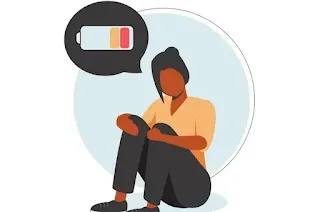Introduction
The COVID-19 pandemic has reshaped global healthcare priorities, but while acute infections have subsided for many, a significant number of individuals continue to experience prolonged symptoms. This phenomenon, commonly known as Long COVID, has sparked widespread concern and scientific inquiry. Alongside Long COVID, other post-viral syndromes are gaining attention as the medical community explores their similarities, causes, and treatments.
In this article, we delve deep into Long COVID, its impact on global health, the role of post-viral syndromes, and emerging treatments. This guide is designed to provide a thorough understanding of these trending medical topics, incorporating the latest research and keywords relevant to healthcare professionals, patients, and researchers.
Read more: Mental Health Awareness: Understanding and Addressing the Invisible Challenge
What is Long COVID?
Long COVID, also known as Post-Acute Sequelae of SARS-CoV-2 Infection (PASC), refers to the continuation or development of new symptoms after the acute phase of a COVID-19 infection has resolved. These symptoms can last for weeks or even months and vary widely among patients.
Common Symptoms of Long COVID:
- Fatigue
- Shortness of breath
- Brain fog
- Chest pain
- Joint pain
- Sleep disturbances
- Depression and anxiety
- Loss of smell or taste
According to the World Health Organization (WHO), Long COVID affects approximately 10-20% of individuals who contract COVID-19, making it a significant global health concern.
Understanding Post-Viral Syndromes
Post-viral syndromes are not unique to COVID-19. Historically, patients have experienced lingering symptoms after recovering from viral infections such as the flu, Epstein-Barr virus, and SARS.
Notable Post-Viral Syndromes:
- Chronic Fatigue Syndrome (CFS/ME)
- Guillain-Barré Syndrome
- Post-Polio Syndrome
- Post-Ebola Syndrome
These conditions share many similarities with Long COVID, suggesting that viral infections can trigger long-term immune system dysregulation.
Causes and Risk Factors of Long COVID
Researchers are still uncovering the underlying causes of Long COVID. However, several potential mechanisms have been proposed:
- Immune System Dysregulation: After a viral infection, the immune system may remain hyperactive, causing inflammation and damage to healthy tissues.
- Viral Persistence: In some cases, remnants of the virus may remain in the body, causing ongoing symptoms.
- Autoimmunity: COVID-19 may trigger an autoimmune response, where the immune system mistakenly attacks the body's own tissues.
- Microclots: Studies have found microclots in the blood of Long COVID patients, which may impair oxygen delivery to tissues.
Risk Factors:
- Severe initial COVID-19 infection
- Pre-existing health conditions
- Female gender
- Older age
Impact of Long COVID on Global Health
The long-term effects of Long COVID are not just medical but also socio-economic. Many patients report difficulty returning to work and maintaining their quality of life.
Key Statistics:
- 10-20% of COVID-19 patients experience Long COVID.
- Long COVID is more prevalent in women than men.
- The condition has led to a surge in disability claims worldwide.
Governments and healthcare organizations are now prioritizing Long COVID clinics to address this emerging healthcare crisis.
Diagnosis and Management of Long COVID
Diagnosing Long COVID can be challenging due to the wide range of symptoms and lack of standardized testing.
Diagnosis:
- Detailed patient history
- Exclusion of other conditions
- Symptom tracking over time
Management Strategies:
- Multidisciplinary Care: Involves specialists in pulmonology, cardiology, neurology, and psychiatry.
- Symptom Management: Medications for specific symptoms (e.g., anti-inflammatory drugs, antidepressants).
- Rehabilitation Programs: Focused on physical therapy, occupational therapy, and mental health support.
- Lifestyle Modifications: Adequate rest, balanced diet, and stress management.
Emerging Treatments for Long COVID
Research into treatments for Long COVID is ongoing, with several promising approaches under investigation.
- Antiviral Therapies: Antiviral drugs, such as Paxlovid, are being explored to see if they can reduce Long COVID symptoms by eliminating residual viral particles.
- Anti-Inflammatory Treatments: Drugs that target inflammation, such as steroids and monoclonal antibodies, may help manage immune system dysregulation.
- Micro clot-Busting Treatments: Research is exploring the use of anticoagulants to address micro clots found in Long COVID patients.
- Vaccines and Booster Shots: Studies suggest that getting COVID-19 vaccines may reduce the risk of developing Long COVID.
The Link Between Long COVID and Mental Health
The psychological impact of Long COVID is significant. Patients often experience depression, anxiety, and PTSD, which can worsen their physical symptoms.
Why Mental Health Matters:
- Chronic illness can lead to emotional distress.
- Social isolation and job loss contribute to mental health issues.
Addressing Mental Health in Long COVID Patients:
- Cognitive Behavioural Therapy (CBT)
- Mindfulness and Stress Reduction Techniques
- Support Groups and Counselling
Preventing Long COVID
Preventing Long COVID starts with preventing COVID-19 infections. Here are key strategies:
- Vaccination: Get vaccinated and stay up-to-date with booster shots.
- Masking and Hygiene: Wear masks in crowded places and maintain good hand hygiene.
- Early Treatment: Seek early treatment for COVID-19 to reduce the severity of the infection.
Long COVID Research and Future Directions
Research into Long COVID is evolving rapidly. Key areas of focus include:
- Understanding the Mechanisms: Exploring immune system dysregulation and viral persistence.
- Developing Diagnostic Tools: Creating reliable tests to diagnose Long COVID.
- Discovering Effective Treatments: Identifying drugs and therapies that can alleviate symptoms.
Major Research Initiatives:
- RECOVER Initiative (NIH)
- Long COVID Research Network
- WHO Long COVID Guidelines

Comments
Post a Comment